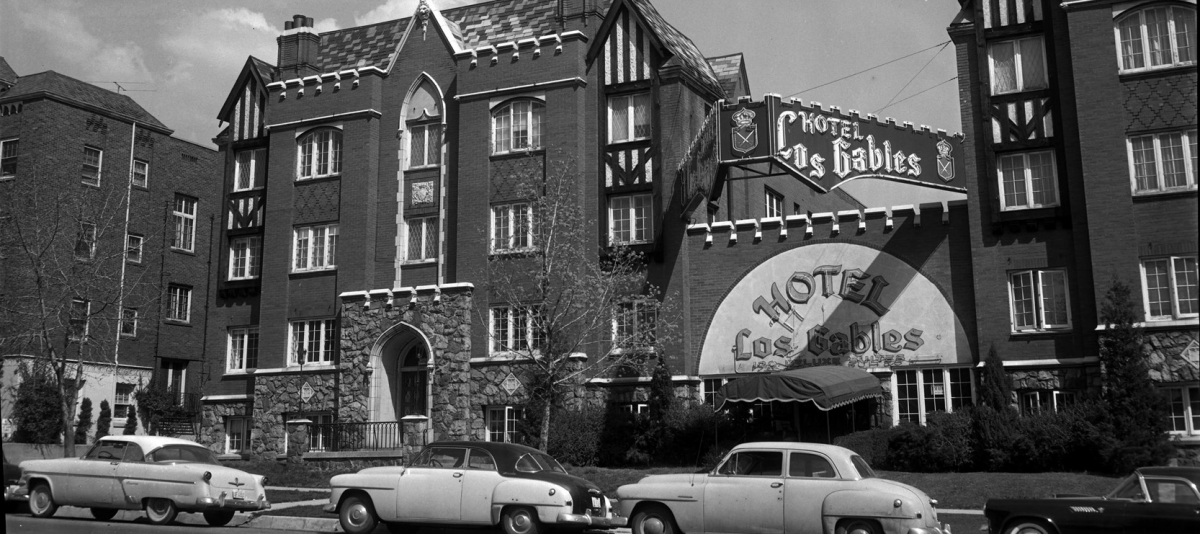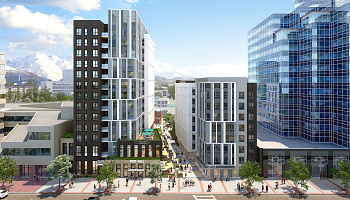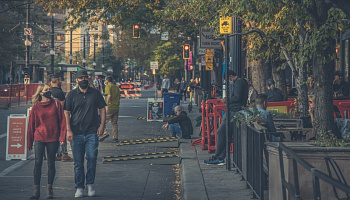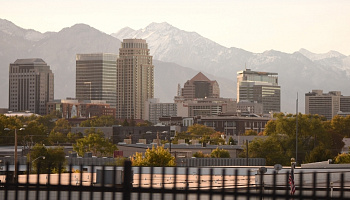Salt Lake City’s recent boom in downtown apartment living echoes a similar heyday that took place 100 years ago. Between 1910 and 1940 the city’s population increased from 92,000 to 140,000 and investments in amenities like streetcars and paved sidewalks fueled a bustling business district. Construction of the city’s first apartment buildings soon following and were completed in two general phases: the first from 1904 through the start of World War I, and then another flurry from the early 1920s until World War II.
These new urban dwellings boasted luxuries that many rural Utahns had never before experienced: innovative frills such as “disappearing” Murphy beds, Frigidaire refrigerators, electric ranges and on-site laundry machines. The interiors were upscale for the time, with glass interior doors, hardwood floors, casement windows, chandeliers and tiled bathrooms. “There’s always somebody home in an apartment,” advertised the Apartment House Association of Utah. “It’s nice to return at night to well-lighted corridors and know that help if needed can be quietly summoned.”
The early apartment buildings were designed as either walk-ups with one or two entrances on each landing or as a double-loaded corridor plan with multiple entrances along a central hall. Architects took advantage of Salt Lake’s deep blocks, fitting the long, narrow apartment buildings on lots where a home and a garden or corral where located previously. After growing up on farms or pioneer homes, downtown apartment living represented an exciting new approach to residential life that everyone from young married couples to recent immigrants were interested in. Fortunately, many of these beautiful vintage apartment buildings still line our streets, reminding of us of the elegance of a bygone era.
The Pauline apartment building at 278 E. 100 South was one of the first to be built in 1904, closely followed by the La France at 246 W. 300 South and the twin buildings of the Altadena and Sampson, at the corner of 300 South and 300 East.
Walk down 300 East today and you will see other lovely historic apartment buildings, with their leaded glass windows, Colonial Revival balconies and ornate entrances. Keep strolling over to 235 S. 200 East and you’ll happen upon the Woodruff apartments, a luxury for the time it was built in 1908. “The building will be steam-heated, you will have hot water ready at all times of day or night, as well as free janitor and night watchman service, telephone and gas range … you will save on coal bills, water, telephone, streetcar fares and other incidentals, will reduce your costs of living, and you will have all the comforts besides,” read a 1908 newspaper ad for the Woodruff. It advertised specifically to “young men looking for desirable apartments close to their work.” Abe Gross and his young wife, Vera, lived in Unit 60 at the Woodruff in 1930 when they first moved to Salt Lake from Chicago. They spoke Polish and English; Abe worked as a truck driver and cattle buyer. Sadly, Abe was killed in a truck accident in 1935 shortly after their son was born, after which Vera moved back to Chicago.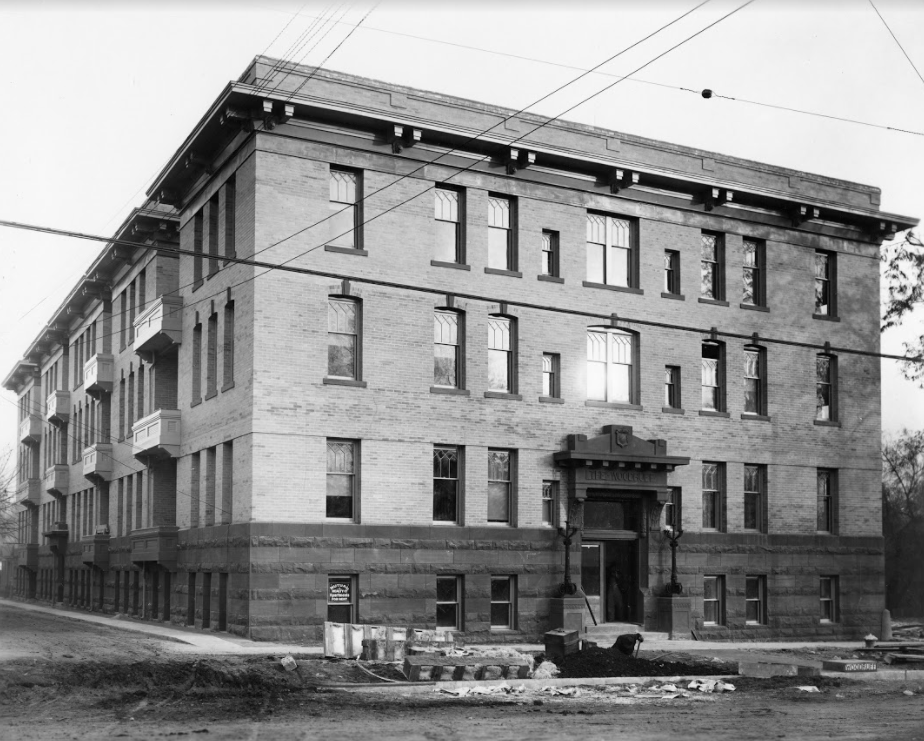
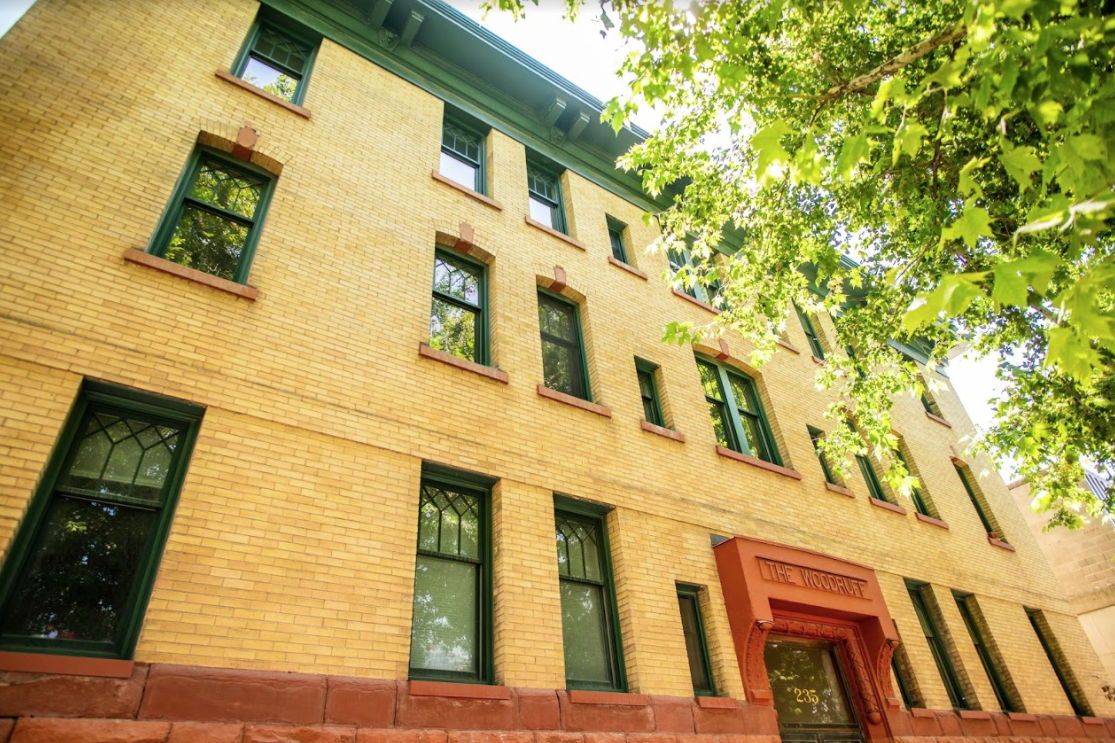
The decorative elements of the turn-of-the-century apartments are striking. Most have the original light posts and fixtures, doors and tiled entries. Note the French door balconies, intricate brick patterns and neon sign at the Embassy Arms, 120 S. 300 East. Venture over to the Piccardy at 115 S. 300 East and you will find a Jacobethan Revival style with twisting columns and large finials, arched windows and an imposing sign over the door. Often the buildings were given creative names to convey sophisticated style, such as the Belvedere (29 S. State), the Hollywood (204 East 100 South) and the Silverado (243 South 300 East).
The Los Gables, built in 1929, occupies nearly half a block at 135 S. 300 East, making it one of the largest early complexes. Note the Moorish arched entrances, stonework and unusual timbering detail around some of the upper windows. Newly married couple Larry and Rosalee Hunt lived in Unit 605 during 1959 when they came from St. George so Larry could serve in the Army at Fort Douglas. The rooms were advertised as “an address to be proud of” with “reasonable monthly rents” of $40.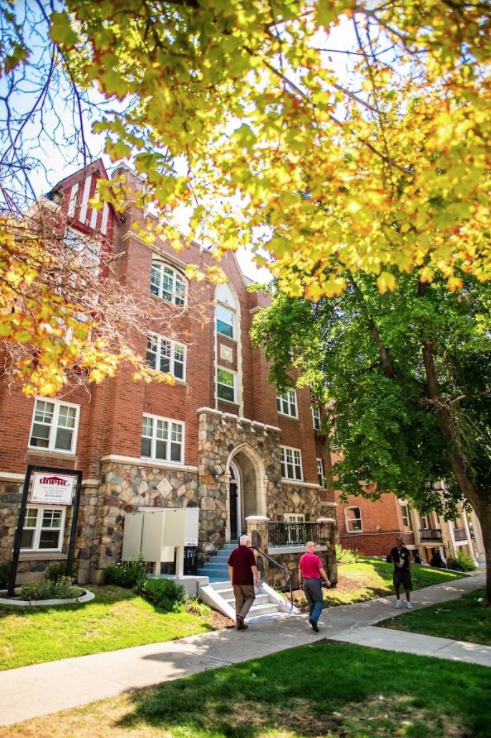
The investors who started Salt Lake’s first apartment boom included local families such as the Coveys, Downings and Sampsons, along with out-of-state financers from California. Several prominent builders constructed most of Salt Lake City’s original apartment buildings, such as W.C.A. (Andy) Vissing, who came to Salt Lake City from Denmark as a 14-year-old, formed his own contracting company and made his fortune by building more than 20 apartment buildings over the course of his career.
The Covey family, led by entrepreneur brothers A.A. Covey, S.M. Covey and H.T. Covey, built apartments to last. All of their early-twentieth-century buildings are still standing and used today—the La France, Hillcrest, New Hillcrest, Kensington, Buckingham and Covey. The Covey Apartments on South Temple were considered the most elegant of the group, even featuring a passenger elevator to serve the seven floors. As you walk by the Covey entrance at 239 East S. Temple, relish the brickwork, gargoyles and wrought-iron balconies. Imagine the first tenants moving into the nearby Hillcrest apartments on First Avenue with its windowed sleeping porches, beautifully-landscaped interior courtyard and private garages out back. The Coveys expected their on-site managers to do everything from mopping hallway floors to delivering ice to residents’ kitchen iceboxes.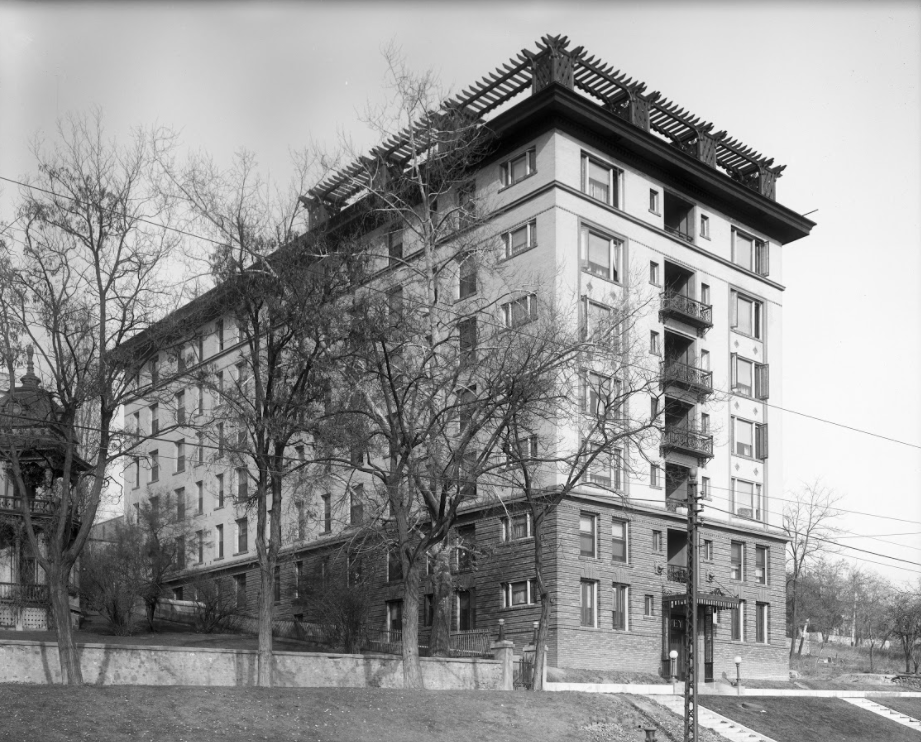
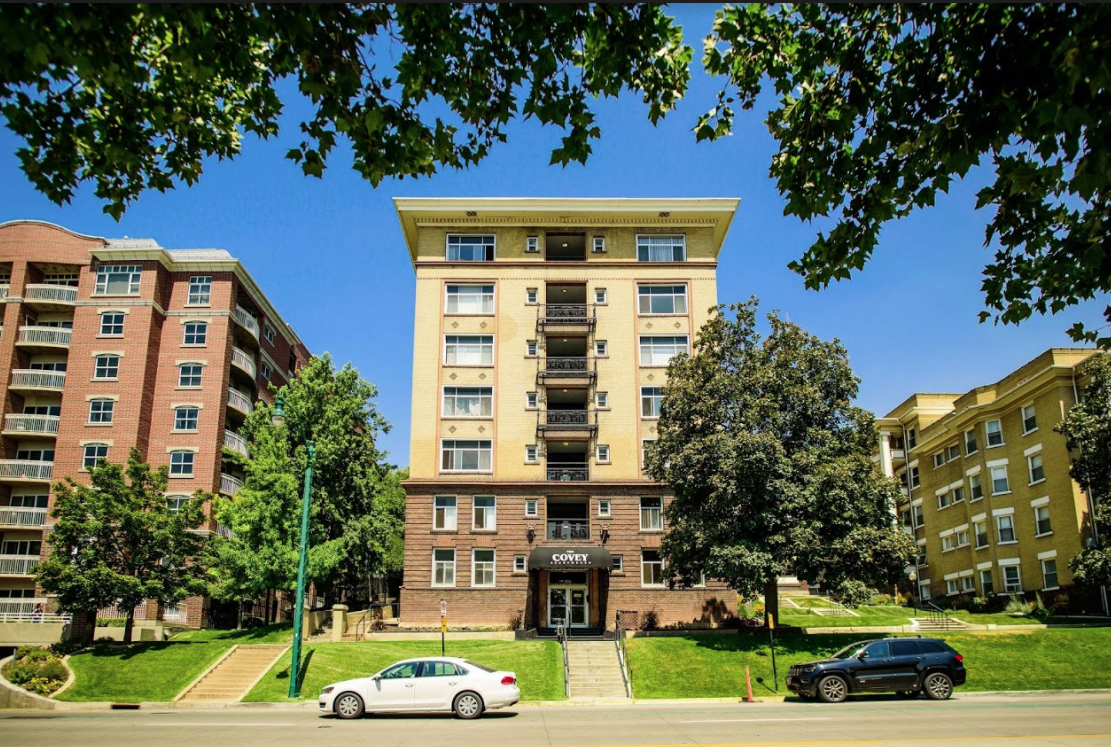
With the advent of The Depression, funding for new construction evaporated. And then, after World War II residents wanted cozy bungalows in the suburbs, which were suddenly more affordable with federal loans. Downtown apartment construction declined further and the occupancy patterns changed dramatically.
By the turn of the twenty-first century, some of these grand old buildings became stylish condominiums, while others serve as low-income or affordable housing. Owners are taking care to maintain the unique architectural features and advertise the historic beauty of the structures. At least 73 of the downtown apartment buildings are listed on the National Register of Historic Places. In 2014, the city adopted design guidelines for the buildings to emphasize their “distinctive urban scale and presence.” The more than 100 historic apartment buildings still in use today are a vivid reminder of the boldness and style with which Salt Lake City entered the twentieth century.

